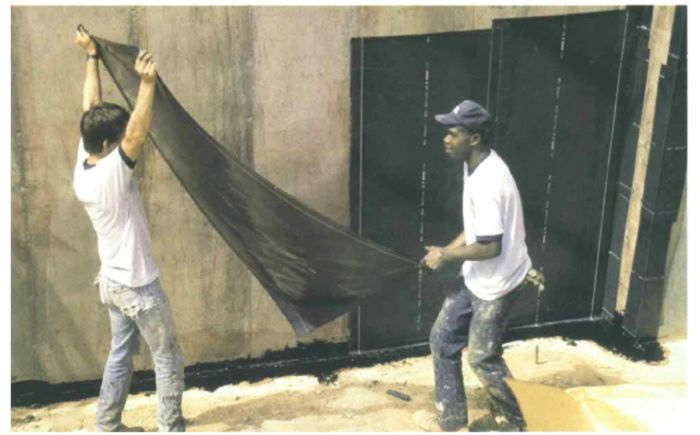Selecting a Moisture-proofing System for New Basements
New products from the latest technologies offer more effective alternatives to slopping sticky tar onto new foundations.

Synopsis: This survey examines the variety of waterproofing products that are applied to the outside of foundation walls. There’s a lot more out there than the buckets of asphalt that most builders grew up with. A sidebar lists manufacturers of different products.
Basements rarely conjure up cheery thoughts. They usually remind me of something out of the horror film A Nightmare on Elm Street. And when it comes to moisture problems, the truth about basements is a real nightmare. Surveys indicate that between 33% and 60% of the 31,000,000 basements in single-family homes in the United States have moisture problems.
A wet basement is uninhabitable, and the mold or mildew that thrive in such a musty environment can ruin anything stored there. Worse, a wet basement can wick more than 10 lb. to 20 lb. of water vapor a day into a home’s interior. In today’s airtight homes, this moisture can condense in the building envelope, causing mold, mildew and eventually rot.
Basements don’t need to be wet. There are scores of products that, when used appropriately and installed with care, help to keep basements dry. It’s important to remember that these products are designed to function in addition to proper drainage.
Waterproofing vs. damp-proofing
Some products are designed to waterproof foundations, while other products only damp-proof them. The American Society for Testing and Materials defines waterproofing as a treatment that prevents the passage of water under hydrostatic pressure. Damp-proofing, on the other hand, only resists the passage of water in the absence of hydrostatic pressure. Hydrostatic pressure is the force that is exerted on a foundation by the water that is in the ground that surrounds the foundation.
Determining the amount of hydrostatic pressure exerted on any given foundation is essential for choosing the appropriate foundation treatment. One way to predict the water-table fluctuations of a particular building site is to have a soils engineer perform an on-site soil test. A cheaper but probably less dependable way is to ask the neighbors.
Ultimately, the real question is whether it’s generally better to damp-proof or to waterproof a basement. The Building Foundation Design Handbook, published by Oak Ridge National Laboratory, recommends waterproofing for all habitable basements because most basements are exposed to at least some hydrostatic pressure. But if you’re not planning to use your basement as living space, or if the soil around your house is exceptionally well-drained, damp-proofing alone may be sufficient for the basement in your house.
Damp-proofing is less expensive but not as effective
Despite strong evidence that damp proofing is insufficient in protecting basements from hydrostatic pressure, 95% of all builders damp-proof their basements, according to Micheal Sutton, a regional manager for Koch Materials Company, which makes the Tuff-N-Dri basement waterproofing system. The success rate is questionable: 85% of builders questioned in a National Association of Home Builders survey said that at least some of the basements they have built leak, costing an average of $1,000 to $2,000 per callback.
The standard practice for damp-proofing new basements is to apply one or two coats of unmodified asphalt (asphalt with no chemical additives) to the exterior side of the foundation walls from the footings to slightly above grade. These asphalts come in various grades suitable for brushing, rolling, squeegeeing, spraying or trowelling. They cost roughly 40¢ to 60¢ installed per sq. ft. of basement-wall area.
For more photos and details, click the View PDF button below:
Fine Homebuilding Recommended Products
Fine Homebuilding receives a commission for items purchased through links on this site, including Amazon Associates and other affiliate advertising programs.

Original Speed Square

A House Needs to Breathe...Or Does It?: An Introduction to Building Science

100-ft. Tape Measure


























